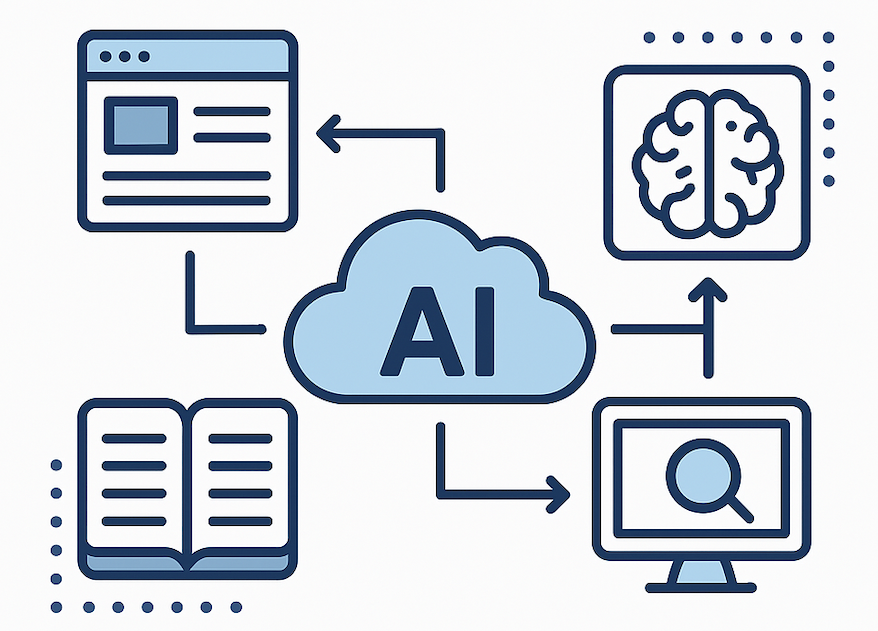
The Information & Referral (I&R) ecosystem, historically a not-for-profit public service, has over the past decade attracted unexpected commercial interest from tech investors seeing an opportunity for disruption. Despite the proliferation of new technologies and platforms, commercial solutions have not delivered on their promises. This post explores the digital transformation of I&R, why commercial platforms are failing, and how AI presents new possibilities for the field.
The Evolution of the Information & Referral Ecosystem
The modern I&R field as we know it today was created by a 2000 Federal Communication Commission (FCC) ruling designating ‘211’ as a national dialing code for community information and referral services. Serving over 18.1 million requests in 2024, this not-for-profit infrastructure plays a vital role in connecting people to services like affordable housing programs, food pantries, mental health support, and job training.
211 services have historically focused primarily on information discovery. In today’s digital age, however, stakeholders—including governments, healthcare providers, and nonprofits—demand solutions that facilitate not just discovery but also service coordination and delivery.
Commercial Disruption & Unmet Expectations
The shift from information discovery to service delivery has disrupted the nonprofit I&R field and attracted dozens of commercial vendors including tech startups like Aunt Bertha (FindHelp) and Unite Us. These companies have been aggregating I&R data into private databases and developing ‘closed-loop’ referral platforms that promised to improve the coordination and delivery of social services.
Despite significant investments and early success, as these systems have aged a number of critical failure points and false assumptions have been exposed.
- Overestimated CBO Engagement – Tech companies envisioned networks where local nonprofits (CBOs) would eagerly participate in service coordination. It turns out, however, the start-ups were a lot more excited about their platforms than the CBOs they promised would use them.
- Market Fragmentation – Competing I&R platforms created silos, leading to inefficiencies rather than streamlined service delivery. Instead of a unified system, regions like Los Angeles have multiple incompatible networks.
- Lack of Interoperability – Unlike other modern software solutions, commercial I&R platforms often resist integration with competitors. This limits their scalability and leaves governments, healthcare, and CBOS struggling with fragmented solutions.
The Role of AI in Transforming I&R
It’s understandable to be skeptical. Over the past decade, the I&R field has seen an influx of new technologies, yet many have fallen short of their promises. With that track record, it’s fair to ask: Why introduce yet another layer of technology?
The promise of AI is not simply in adding more tools to an already fragmented system. Rather, it offers a fundamentally different approach. AI can enhance collaboration and improve service coordination in three key ways:
- Smarter Information Discovery – AI-driven chatbots and search engines will replace keyword-based databases with conversational interfaces that provide more intuitive and personalized search experiences.
- Automation in Data Management – AI can streamline the process of updating, verifying, and maintaining social service directories, reducing costs and improving data accuracy.
- Simplified Service Access – AI-powered assistants can help individuals navigate applications for social services, auto-filling forms, verify eligibility, and ensure seamless submission to relevant agencies.
These are just the most immediate and obvious opportunities and low-hanging fruit that we at One Degree are seeing and starting to work on today. But they represent only the tip of the iceberg.
A Future of Interoperable, Public-Interest I&R Technology
AI’s most valuable role, however, may not be in creating new user experiences for help seekers but rather in giving public-interest technologists the systems integration horsepower they need to make interoperability a reality. By leveraging AI for interoperability, we can level the technological playing field and empower local social sector leaders to successfully advance the promise of cross-sector collaboration and accelerate the development of new public/private solutions. We’re working on an AI concept that can help integrate disparate systems to help government agencies, healthcare providers, and CBOs work together without being locked into proprietary commercial networks.
The core issue in I&R is not technology alone—it’s cooperation—and AI might just be the transformative tool advocates for interoperability and public-interest tech need to spark a movement to bring communities and systems together for a healthier world.
